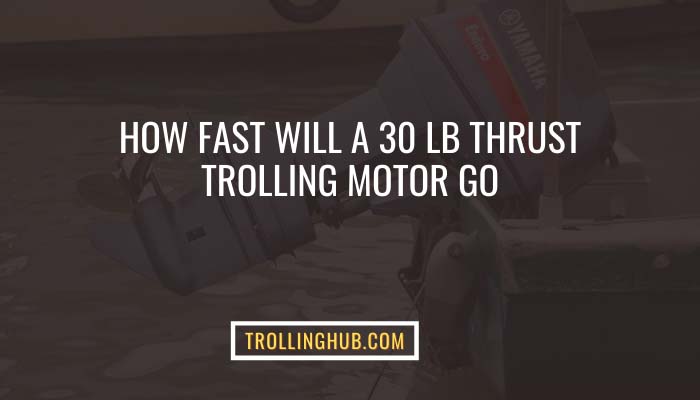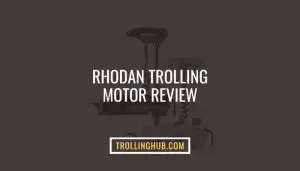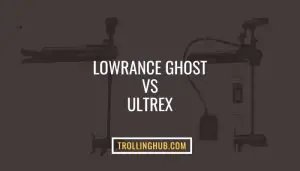
Whenever you opt for buying a motor boat, the first thing that’ll come to mind is how speedier your boat will be. There’re different thrust trolling motors with different weights available in the market.
For example, if you’re buying a 30lb trolling motor, then pretty sure you’ll think about how fast will a 30lb thrust trolling motor go.
Well, there’s no straightforward answer to this question because it’ll depend on the weight you put on, the nature of the water, and many more. But the most important is the thrust value of the trolling motor, which is 5 miles per hour to the maximum.
So the maximum cutoff speed is 5 miles an hour, but it could be increased or reduced depending on the other factors, which we’ll be discussing later in the article. That’s why to learn more, keep on reading.
What Determines the Speed of A Trolling Motor
The speed of a trolling motor is determined by the propeller speed. It actually counts according to rpm (revolution per minute) unit.
Here the revolution calculation mostly depends on the battery power, armature current, overall load weight, propeller condition, etc. For example, if you put excessive weight in the boat trolling motor’s speed seems to decrease. Similarly, motor speed varies according to the changes in the above conditions.
What is 30lb Trolling Motor Thrust?
Thrust is a parameter of a trolling boat that determines how strong your boat’s engine is. Most people think that it also refers to the speed of the boat, which is a misconception because it doesn’t deal with the speed. So a 30 lb trolling motor thrust indicates how much battery power you need.
Thrust is mainly defined according to boat weight and hull design. In general 2 lb thrust is required for every 100lb weighted boat. So, from this calculation, we can say that a 30lb trolling motor can use for a boat whose maximum weight can be (100*30)/2 = 1500lb. On the other hand for hull consideration we can select those boat hull designs is focused on the shallow draft vessel.
Parameters Which Control the trolling motor speed
The following are the parameters that control the trolling speed. Let’s check out here.
- Load
The amount of load you put on a boat definitely impacts the speed. You can think of it in a way, suppose you’re an athlete, and someone gives you 2 books and asks you to run about 100 meters.
Pretty sure that you can run without affecting your speed, but if someone told you to run 100 meters with 20 or more books. Then what will happen? Your speed will be slower gradually, right!
Exactly the same thing goes with a boat; the more load you put on, the more low speed you’ll get. So you have to be mindful whenever you put on weight at a given time.
- Frequency
The next factor that has a direct impact on a boat’s speed is frequency. Here frequency means how often a boat’s engine is used often.
Having said that, there’s no denying that a boat that is used frequently in travel will be speeder and quicker than the one that is not used regularly. What’s the reason behind it? The reason is that frequent use of the boat makes its engine more powerful and robust.
- Brand
Whether your boat is speedier or not will also depend on which brand manufactures the brand. This is very simple because a premium will make a boat with sturdy and durable material that eventually controls the trolling speed compared to a local brand.
- Nature of the Water
Here comes another factor that controls the trolling speed is the nature of the water, meaning whether the boat is on calm water or turbulent. In turbulent water, excess drag and disturbance will reduce the speed of the boat.
On the other hand, a boat travels faster on the calm water as there’s no disturbance.
- Fuel
The fuel used in a motor boat affects its speed since various types of motor boats have varying top speeds.
There’re three types of gasoline used in a motor boat, the same as for every kind of car. The first is gasoline, which moves at the slowest possible pace.
Next comes diesel, which runs quicker than gasoline, and finally is distillate for powering the boat’s engine.
- Maintenance
Everything needs maintenance for a longer lifespan and no exception to the boat’s speed.
Suppose you’re using a boat regularly and not maintaining it properly then how do you expect a longer lifespan from the boat, right! That’s why it’s recommended to service your boat’s engine weekly.
Does The Thrust Affect Trolling Motor Speed
The amount of thrust your boat will need is perhaps the most critical factor to consider when shopping for a trolling motor.
A motor’s thrust, expressed in pounds (lbs), is the most often used metric for measuring its power. Larger and heavier boats need more propulsion to move them effectively through water. It’s a good idea to steer clear of trolling motors with too little power.
Although many people believe thrust will result in increased speeds (or horsepower), this isn’t always the case. “Torque” in an automobile is akin to “pull and twist,” not speed when it comes to thrusting.
For GPS-equipped trolling motors, adequate thrust level is especially important since they are meant to maintain your boat in the same location for a longer time.
How to Speed Up Trolling Motor
We’ve already seen the parameters that control the speed of the motor. But certain factors can increase the speed too. They are:
- Use A Different Battery
Changing the battery is the first step. Low motor power output is often caused by batteries that have degraded or whose chemical composition has degraded.
Check to see whether it can still be charged before determining whether or not to replace the batteries. You can select high-end lithium batteries to store the voltage and amps and helps you to speed up your motor more smoothly.


- Reduce The Weight
When it comes to electronics, motors are no different than any other piece of hardware.
If you notice a decline in the canoe’s speed and general performance, it’s because you’re overloading it.
Reduce the weight of the canoe’s planned cargo in order to alleviate this problem. Carry just what you absolutely must and leave the rest behind.
- Install An Updated Motor
The next option is to replace the old motor if none of the preceding solutions work for you. Make sure to go for a model with greater power output and bigger size, if feasible. If you want to get the best result in terms of speed consideration you can go for a brushless permanent magnet trolling motor. It provides more efficiency than a regular brushed motor as well as reduces heat loss and maintenance hassle.


In general, the additional engine will increase the canoe’s overall power and performance. You’ll need the help of a professional to carry out this worthy mission. The hazards associated with neglect are too great to be tolerated.
- Fix The Propeller
Make sure the propeller is well-built and functional at all times. A more efficient propeller may be a viable option in light of the above.
Generally speaking, the propeller you fix should be compatible with and preferably be the same size as the engine being used as a general rule of thumb.
FAQs
Trolling motors can lose power for a variety of reasons, including burnt or scorched wire connections in the motor’s head. In addition, there could be issues with switches and plugs. If you place the motor in a test tank and measure the amp draw at high speed, an ASC can tell you whether or not you’re receiving the entire amount of power.
According to the experts, a boat’s motor requires 2lb thrust for every 100lbs weight. So the maximum weight for a 30lb thrusting motor will be 30 * 100/2 which is 1500lbs.
The formula of finding the horsepower of a 30lb thrust trolling motor is:
Thrust (pounds) * Speed (mph) / 375
So for the 30lb thrust with 5mph speed the horsepower will be 0.36.
Trolling motors need a battery charge of 120 Ah if they are run continuously for six hours at a 50 percent load.
The calculation is: 6 hours x 20 amps is equal to 120 amp-hours (peak demand hours). A 240 Ah deep cycling battery bank should be maintained at 50% charge to achieve optimum battery life.
If you want good results, submerge the top of the motor part about 12 inches below the surface. Bow-mount motors need more consideration when choosing a shaft length than transom-mount motors. Due to the commonality of boat transoms, Minn Kota’s standard transom shaft lengths should be appropriate for most boats.
Final Thoughts
So far, you got to know that you cannot simplify the answer of how fast will a 30lb thrust trolling motor go because certain parameters determine the value.
But as we already mentioned in the article , there’re some factors that can control and increase the boat’s speed. However, keep in mind those will help you while navigating the boat.



